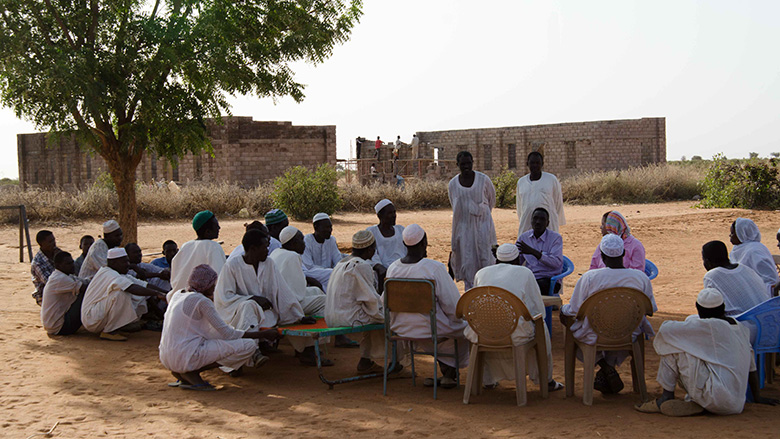KASSALA, March 30, 2016 – For centuries, Sudan’s vast pastures and agricultural land provided citizens with ample food and grazing land, but this has changed in recent years. Unsustainable and poorly managed land and water use, compounded by climate change, including drought, have had a devastating effect on the livelihoods of millions of Sudanese.
In Kassala State, one of the most arid states in the country, an estimated 1.5 million people and about three million cattle live there, and an additional three million cattle pass through seasonally. This has put an immense pressure on the state’s natural resources.
“Eighty percent of the local population earn their living from subsistence farming,” said Asferachew Abate, World Bank senior environmental specialist. “To begin with, because they rely on the rain for their crops, the majority only produce around 16% of those who use irrigation. Moreover, the frequent drought and soil nutrient depletion means that they can no longer produce enough to feed their family.”
Under the Sustainable Natural Resources Management Project (SNRMP), the World Bank is helping the government of Sudan to reverse the impact of land degradation and improve the livelihoods of more than 50,000 people in Gezera, White Nile and Kassala states. The project is helping to increase the adoption of sustainable land and water management (SLWM) practices by promoting improved soil and water management practices, rehabilitating and managing the forested ecosystem, establishing shelter belts and sand dune, and demarcating animal migration routes and grazing land rotations. It is also helping to establish nurseries to support the rehabilitation of degraded lands.
The project’s community driven development approach has enabled people to have a say in their own development agenda, which has resulted in a sense of ownership and increased citizen participation in project implementation. To ensure that communities are able to properly manage the activities, the project works through Village Development Committees, and provides them with the necessary training on sustainable management of natural resources and initiatives for improving their livelihoods. As a result, the communities have started using efficient cook stoves and establishing vegetable gardens to supplement their income. There are also plans to implement additional activities including literacy programs and the provision of improved water sources.
In all three states, women play a central role in implementing the project and promoting change. They are actively taking part in promoting the use of alternative fuel sources and nursery activities. The project has also helped to improve the livelihoods of more than 80 women in four villages by providing them food processing training, enabling them to pursue alternative sources of income.
As a result of the project, communities are now using sustainable land management practices. During the last rainy season, citizens rehabilitated 2,500 hectares of rangelands and planted seedlings of indigenous trees on 4,340 hectares. In addition, the project has helped communities restore ecosystems that would promote the return of the original small mammals, birds, reptiles, other fauna, and plants which are key to promoting conservation of biodiversity and a balanced ecosystem.
The project also includes a capacity building component for government institutions involved in the management of forests and protected areas, rangelands and wildlife by providing training and essential equipment to help them manage natural resources sustainably.

